Some of the links in this article are affiliate links which means that if you choose to click on them and make a purchase, I earn a small commission at no extra cost to you.
Also, as an Amazon Associate, I earn from qualifying Amazon purchases.
For more details, please read the full disclosure here.
Thanks so much for your support!
Can you use acrylic paint on walls? It’s a question that has crossed the minds of many acrylic painters, and today I’m going to answer it and a whole bunch more.
The quick answer is yes, you can use acrylic paint on walls. For interior or exterior murals, acrylic paint is durable and can be used on concrete, drywall, brick, wood, and metal. You can do just about anything! It’s tough, flexible, and comes in tons of colors. Having said that, there are a few things to keep in mind and extra tools you might need to ensure your artwork lasts.
Even though we’ll be focusing on using acrylic paint to create interior murals, I have successfully mixed acrylic artist paint with interior latex wall paint on two different occasions. The paint in both rooms has held up really well considering one of them is my bathroom!
Let’s dive into everything you need to know about using acrylic paint on different building materials so that you’ll have success when painting murals no matter what your wall is made of.
In This Article...
- Pre-Prep Game Plan: Don’t Start Slapping Acrylic Paint Onto The Walls Yet!
- Tools You May Need For Painting With Acrylics On Walls
- How To Prep Painted Drywall Before Using Acrylic Paint
- Prepping For Acrylic Paint On Different Surfaces
- How To Finish Your Acrylic Wall Mural Painting
- Can You Use Acrylic Paint On Walls: FAQ
- Final Thoughts: Painting With Acrylics On Interior Walls
Pre-Prep Game Plan: Don’t Start Slapping Acrylic Paint Onto The Walls Yet!
Woah, there, speedy! Before you start invoking your inner Michelangelo to create the most brilliant acrylic mural ever, there are a few things you need to sort out and they’re pretty important so don’t skip this step.
Traffic Volume: Protecting Your Acrylic Wall Painting
One of the things you need to consider when figuring out if you can use acrylic paint on walls is the traffic volume.
Are we talking about a high-traffic area where you have a lot of movement (of the two or four-legged kind)? The good news is that it should hold up if you prep and finish your wall painting well.
However, I would advise you to keep your art piece out of reach of crayons, finger paint, markers, and furry friends who think walls were made for scratching (or even scratching an itchy back).
What it boils down to is choosing a place on the wall that won’t bear the brunt of everyday living. You want to keep your work, which you spent so much time on, in tip-top shape for as long as possible.

Size Matters When Painting Murals
How big is the wall you’re planning to paint? This will determine how many supplies you’ll need and how affordable it’s going to be. Remember, the larger the wall painting, the more money it will cost.
This is where a few small cans of 100% acrylic wall paint will come in handy. You can use it to block in large areas and save the more expensive tubes of acrylic artist paint for the finer details.
Carefully Consider The Subject Matter Of Your Acrylic Wall Art
Choose the theme of your painting wisely so that it enhances the décor of the room, or the composition translates well for multiple stages of life and can work in a room that has the potential of being used for something other than its purpose at the time of painting.
Creating art on walls is not portable like a canvas painting is but it will be just as much, if not more, work so you want to make sure that the subject matter can be enjoyed for years to come.
- Think about the colors in the room and how you could pick those colors up in your mural without going overboard
- Is this mural for a child that will continue to grow within that space (baby zoo animals are great for toddlers but I’m pretty sure your future teen may have an issue with it)?
- A designated dining room may look fabulous with a wall covered in painted lemons but if you end up turning that space into a functional office area you may find that it’s distracting and just doesn’t help create a feeling of productivity
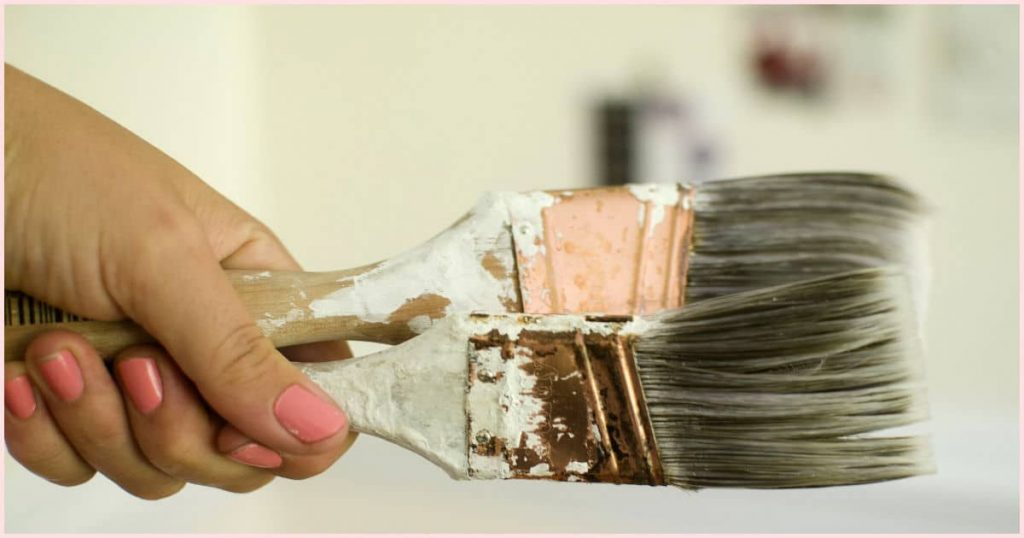
Tools You May Need For Painting With Acrylics On Walls
Before you start painting a wall with acrylic paint, you’ll want to make sure you have all of the tools you’ll need to prep the surface, create the mural, and finish up by sealing it.
Depending on how large of a wall painting you want, you may not have to buy very many additional tools but, remember, the bigger the mural, the more you’ll have to spend.
Materials Needed:
- Sandpaper (fine grit 80-100)
- Microfiber cloths
- Drop cloths
- Foam or short nap roller (for smooth application over large areas)
- Acrylic primer (depending on the surface)
- Acrylic medium (matte medium works well for smooth surfaces and a matte gel is great to cover rough surfaces)
- Acrylic gesso
- Chalk for creating a basic plan of the composition of your mural
- Projector (for transferring large images onto the wall)
- Brushes in different sizes and shapes(based on the size of your mural)
- Acrylic artist paint
- Latex or acrylic interior wall paint (if you are covering a large area)
- Acrylic isolation coat or a liquid gloss medium (to protect your artwork and create a barrier between your mural and the final varnish)
- Water-based, non-yellowing varnish in whatever sheen you prefer
- Damp rags for quick clean-up of spills
- Jar of clean water for cleaning bushes
- Rags or paper towels for drying brushes
How To Prep Painted Drywall Before Using Acrylic Paint
For the next little bit, we’re going to talk about how to prepare for using acrylic paint on walls. This includes drywall, wood, concrete, brick, and even metal!
It may seem like a lot of steps but, trust me, if you are going to paint a mural on your wall, you want your hard work to last, right? Prep work is crucial to creating a strong foundation for your painting.
In addition, it’s a good idea to know what kind of paint was used on the wall. If it was an oil-based paint, you do NOT want to skip the primer! Why? Because you can’t use acrylics over oils. You’ll end up with peeling and a big ol’ upsetting mess.
As a general guideline, you want to:
- Check the surface for damage and fill
- Sand the area to loosen any particles of dirt and dust
- Clean the area to be painted (you can use warm soapy water or you can use something like TSP cleaner, for high-traffic areas that may have oils from little (or big) fingers
- Seal with an acrylic primer (we’ll discuss this in a minute) and/or an acrylic medium (matte medium for smooth surfaces or gel medium to level out rough surfaces)
- Follow up with a coat or two of gesso (you can lightly sand this between coats, as well, if you like)
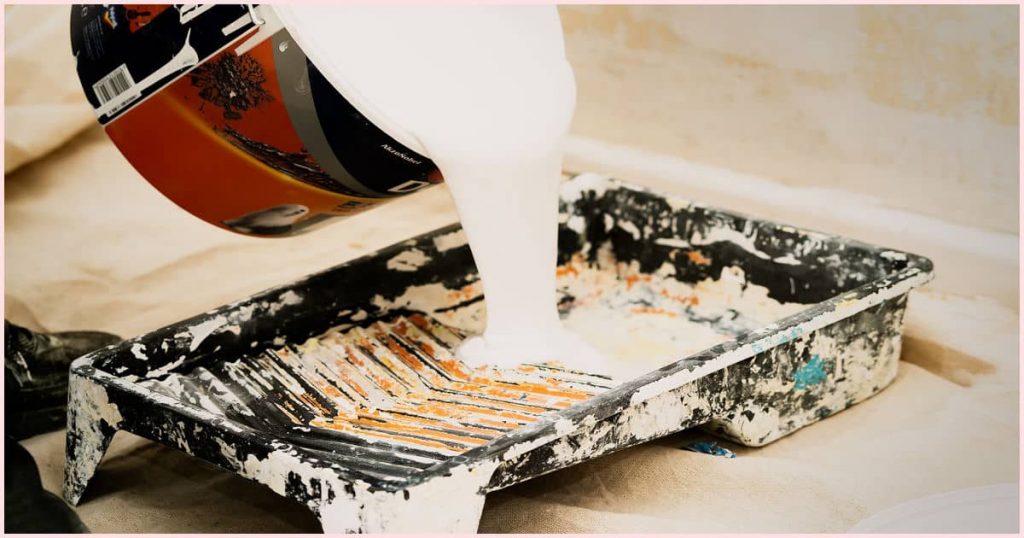
Prepping For Acrylic Paint On Different Surfaces
For all of these different surfaces, the process of prepping is pretty much the same with one very important addition when you’re working with metal and brand new unpainted drywall.
Prepping Concrete, Bricks, Wood (New Or Painted), And Painted Drywall
The best way to prepare these surfaces for acrylic paint is:
- Lightly sand to loosen various particles (you want to try to get as smooth a surface as possible)
- Clean the area with soapy water and a lint-free cloth (microfibre cloths ROCK at this job!)
- Apply a layer of acrylic medium (this is to create a “familiar” barrier between the surface and the acrylic paint and to stop absorption issues)
- Add a layer or two of gesso so you have a great starting point
Preparing New Drywall And Metal (Unprimed or Painted) For Acrylics
Can you use acrylic paint on walls that are made from metal or brand new drywall? You bet!
- You’ll want to sand both surfaces as needed to create a level area
- Use a microfibre cloth to get rid of any dust or debris
- Next, you’ll want to seal these surfaces with an acrylic primer (you can find these at any home improvement store and they come in a variety of brand names, such as AquaLock, but you just need to make sure that it’s a 100% acrylic multi-purpose primer and sealer)
- Then, you’ll want to use an acrylic medium (this acts as a barrier between the surface and the acrylic paint)
- Finally, add up to two coats of acrylic gesso
Side Note
- If you’re going to use a cleaner such as TSP, please be sure to read the manufacturer’s instructions for use, which surfaces are appropriate to use the cleaner on, and any additional warnings they may have
- Check out The Paint Store for more information about using Aqua Lock Acrylic Primer on different surfaces (I am not an affiliate of The Paint Store but I found that their product page had all the info you may need to learn about acrylic primers)
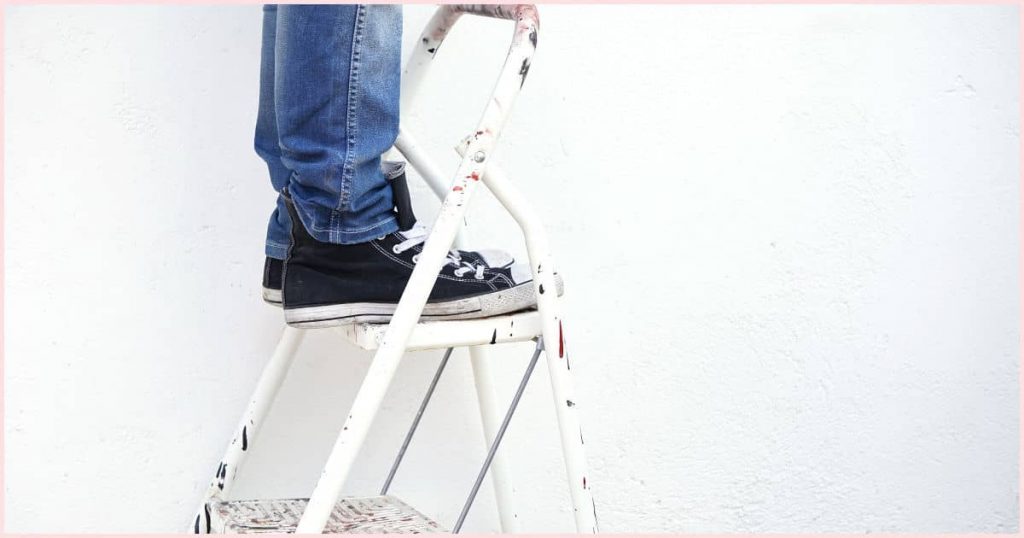
How To Finish Your Acrylic Wall Mural Painting
So, can you use acrylic paint on walls without sealing it after it’s been painted? I give that one a hard no. I mean, you can skip the finishing steps if you want but your spectacular artwork won’t last as well without some protection. Plus, varnish really makes the colors pop! It’s quite amazing how that works.
The most important thing is to use an archival, non-yellowing water-based varnish. This will help protect your art from damaging UV rays, which can cause cracking. Yikes!
You might want to consider using a matte finish to limit glare from windows or lighting but, personally, that is the only time I would use a matte varnish.
Matte varnish has a tendency to dull the paint colors and, for that reason, I normally go for a satin finish, whether I’m working on a mural or sealing a canvas. I’ve also seen some high gloss murals that were absolutely gorgeous and really helped to bounce light around the room. Mostly, it’s going to come down to personal preference.
Many different companies make the appropriate varnish, such as Liquitex and Golden and you’ll probably want to use a brush-on varnish with a large brush.
Extra Tips
- Sometimes when I varnish a canvas painting I also add an isolation coat before adding the varnish (you can find out about isolation coats and other tips in my article on finishing a painting)
- Be careful to not overbrush the varnish when you’re applying it or it will get cloudy!
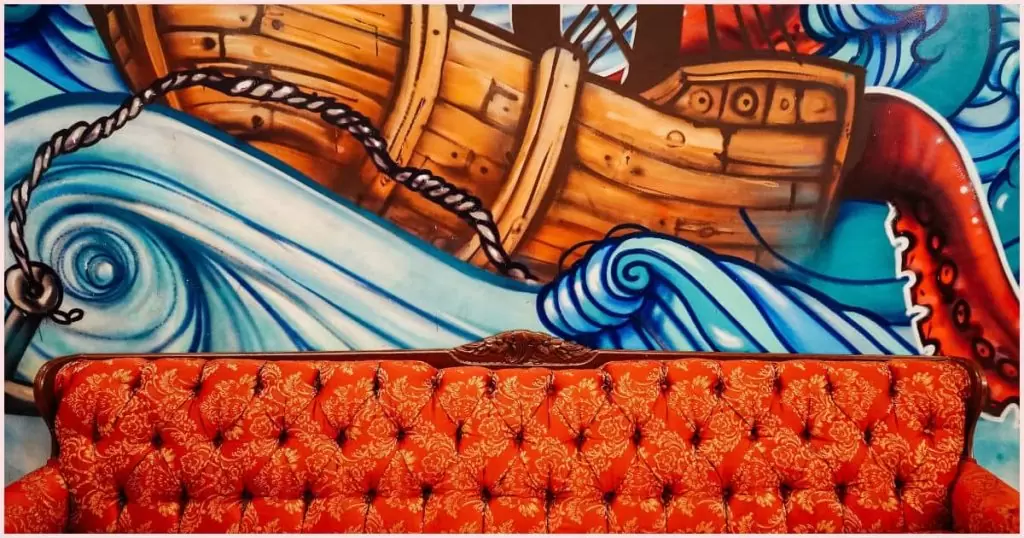
Can You Use Acrylic Paint On Walls: FAQ
There are a lot of other questions people have when wanting to know whether you can use acrylic paint on walls. I’ve done my best to answer them so you have the best chance at success.
Q: What’s The Best Type Of Acrylic Paint To Use On Walls?
A: If you are planning on using acrylic paint on walls you want to make sure that it has an excellent lightfastness score. Lightfastness refers to the paint’s ability to resist fading when exposed to light. If you’re not sure how to find out if your paint is lightfast, I go over that and more in my how to read a paint label article.
Q: Is Acrylic Paint Waterproof?
A: No, acrylic paint is not waterproof it is, however, somewhat water resistant but I wouldn’t take any chances. To protect your wall painting from water make sure to seal it well.
Q: Can You Paint Over Old Wall Paint With Acrylics?
A: Absolutely! However, if you’re not sure if the old paint is water-based, your best bet is to use an acrylic primer first. You can paint oils over acrylics no problem but not acrylics over oils.
Q: How Long Does It Take A Mural To Dry When Using Acrylic Paint?
A: A mural created with acrylic paint will take about 20-30 minutes to dry, give or take. A lot depends on how thick the paint is, what the environment in the room is like and if you used any extra mediums to extend the drying time. I have a separate blog post all about the drying time of acrylics.
Q: Do Murals Painted With Acrylics Need To Cure?
A: As with canvas paintings, I would allow your wall paintings to cure before and after finishing them with varnish. Typically, I suggest at least two weeks before varnishing but you should wait even longer if the paint is thick. Once varnished, I’d wait another two weeks before you place any furniture or draperies near your new masterpiece.
Q: How Do I Transfer A Large Image Onto A Wall For Painting?
A: To transfer a large image onto a wall, you can either do the grid method, use an art projector, make several traceables, or freehand it. Check out my article that goes over your options for transferring photos or images in detail.
Q: Does Acrylic Paint Hold Up To Washing On Interior Walls?
A: Typically, you will want to dry dust your wall painting but if you have to give it a better cleaning, only use mild soap and water with a damp rag, and don’t scrub. A gentle hand is your best friend in this scenario.
Q: Are Acrylic Paint And Latex Paint The Same Thing?
A: Although acrylics and latex are both made with acrylic resins they are not the same thing. Acrylic paint is much more flexible and has a better lightfastness than latex.
That said, you can mix them together. As I’ve said earlier in this article, I have done that and it’s holding up just fine.
Now, would I use a mix of latex and acrylic on canvas for anyone else but myself? No, but that’s mostly a personal preference and I don’t know how the mixture would react to different variables in someone else’s home.
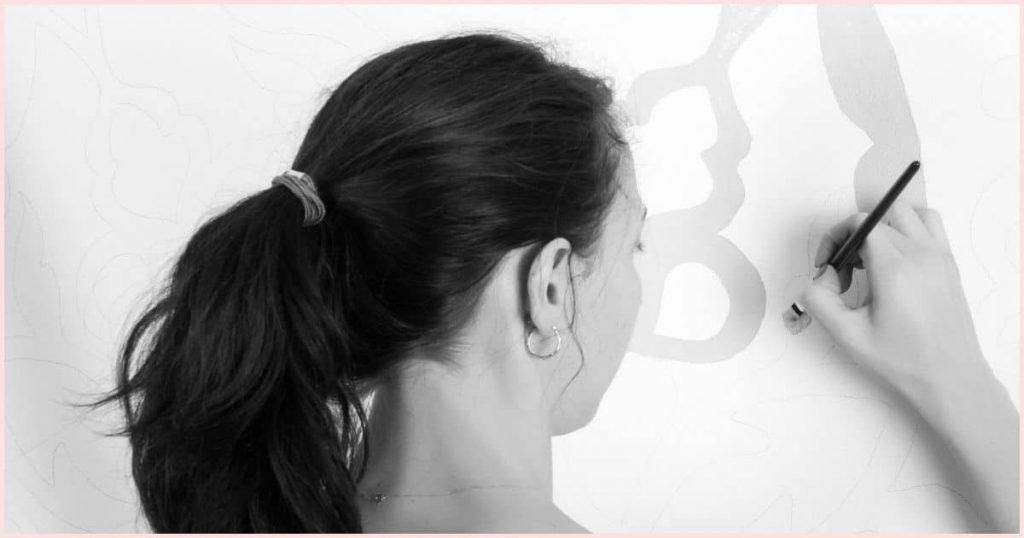
Extra Tips
- Don’t skip the prep
- If you’re painting something you love and you could eventually move, consider a large canvas instead
- Don’t worry about making mistakes (it’s just paint so paint over it and start again)
- If your wall mural is large, make sure to stand back every once in a while to see the painting as a whole
- Stand back and take a photo of your mural and then look at it from that vantage point (this can show you things that you wouldn’t otherwise see. The same is true if you look at the painting through a mirror)
Final Thoughts: Painting With Acrylics On Interior Walls
So, there you have it! If you’re one of the gazillion people asking “can you use acrylic paint on walls?” The resounding answer is yes! Woohoo!
You have all the information needed to paint a wall mural from start to finish and even some things to consider before you get going on your masterpiece.
Creating large wall paintings is a creative way to turn a drab room into something spectacular, and best of all, it’s all you, baby!
Know anyone who’s planning on painting a mural with acrylics? Help them out by sharing this useful info!
Related Articles To Help You Paint Large Art
- Plan Your Art Project
- Create Depth Illusions With Vanishing Points
- Make Sure Your Mural Has Enough Variety

Meet Sara, a seasoned veteran in the world of art. With a knack for mixing paints to unveil breathtaking new hues, she’s adorned countless commissions and independently captivated art enthusiasts with her creations. Having spent over a decade immersed in the realm of art gallery management, Sara’s insight into the intricacies of the art scene shines through her work.
But don’t let her impressive résumé fool you – Sara’s approach to art is as lively as her palette. Known for her wit and humor, she infuses her passion for painting with a playful spirit, making every stroke a delightful adventure. As a dedicated mentor, she’s committed to guiding her fellow artists towards success, always staying ahead of the curve with the latest techniques and trends.

I am going to try one on wall your article was ossom how can contact you if I needed guidance.
Hi, there! So glad you liked the article. If you have questions, just leave a comment here and I’ll get back to you as soon as I can. Also, other fellow painters from the community may be able to chime in to help you out. Happy Painting!
I painted a large acrylic mural on painted drywall 30 years ago on an interior wall that isn’t exposed to sunlight. I varnished it and the colors have held up well. There has been slight damage to the drywall and I want to make small corrections to parts of the painting. Is it OK to slightly sand the varnished area to make corrections to the painting? Also can I use any varnish over just the corrected part if I can’t remember what the original varnish was? Would Liquitex or Golden be fine?
Hi there! As long as everything previously used was water-based and not oil, your plan is a solid one. Either Liquitex or Golden are great choices. Good luck with your project and happy painting!
15 years ago my friend painted a mural in my child’s bedroom. I think it is acrylic paint. The wall is textured plaster. Can I paint over this, or do I need to try to remove it first? What paint should I use? I have a special needs child with respiratory issues, so that is a concern with the products that I use.
Hi there. First, you need to know for sure what the mural was painted with so you don’t try to paint over it with a product that isn’t compatible. It’s hard to say what the best course of action would be for someone with respiratory issues so, to be safe, I’d ask a medical professional. Once you have the okay, I would actually just try to level the plaster in the area you’re wanting to paint (if your goal is to paint on a smooth surface) but that would be something you’d have to ask a drywall hanger or carpenter. They would know best how to handle that. Sorry I couldn’t be more help to you but good luck in your quest!